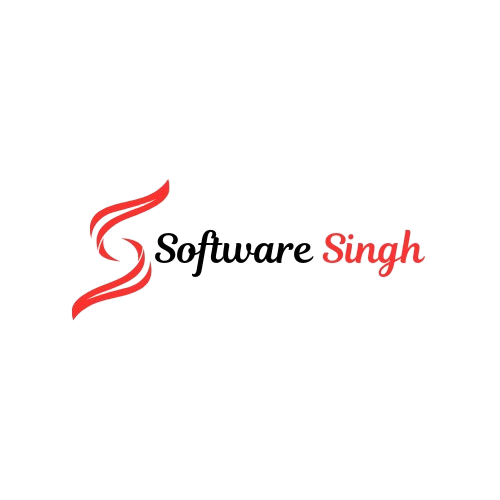
In 2024, WhatsApp has solidified its position as one of the most powerful platforms for businesses to engage with customers. With over 2 billion active users worldwide, WhatsApp provides brands with a unique opportunity to connect directly with their audience on a platform that they already use every day. However, building a successful brand presence on WhatsApp requires strategic planning, smart execution, and an understanding of best practices to ensure both effective marketing and a positive customer experience.
1. Get Started with the WhatsApp Business API
For large-scale brands, using the WhatsApp Business API is essential. Unlike the standard WhatsApp Business App, the API is designed to handle bulk messaging, automated communication, and advanced customer interaction.
Key benefits of the WhatsApp API:
- Personalized communication at scale.
- Automation through chatbots for FAQs and customer support.
- Interactive messages using buttons and quick replies to drive customer engagement.
- Bulk messaging capabilities with rich media formats (images, videos, documents).
The API allows your brand to send notifications, reminders, offers, and customer support messages in a highly personalized manner, without compromising on quality.
2. Craft Engaging and Non-Spammy Messages
One of the main challenges brands face on WhatsApp is ensuring that their messages don’t come across as spammy or intrusive. Since WhatsApp is primarily a personal communication tool, it’s essential that brands respect the platform’s tone and its users’ preferences.
Tips for crafting engaging messages:
- Personalization is key: Address customers by their names, and tailor messages to their specific interests and previous interactions.
- Limit the frequency: Avoid overwhelming customers with too many messages. Maintain a healthy balance to keep customers engaged without being overbearing.
- Call-to-action (CTA): Use clear CTAs in your messages, but ensure that they fit naturally within the conversation.
3. Leverage WhatsApp Status for Storytelling
WhatsApp Status allows businesses to share updates that last for 24 hours, similar to Instagram or Facebook Stories. This is an excellent opportunity for brands to share behind-the-scenes content, product updates, limited-time offers, and more.
WhatsApp Status best practices:
- Create urgency: Since Status updates disappear after 24 hours, they are great for promoting time-sensitive deals or product launches.
- Storytelling: Use Status to share the human side of your brand, such as employee stories, customer testimonials, or sneak peeks of upcoming products.
- Engage with visual content: High-quality images and short, engaging videos perform best on Status. Make your content visually appealing to capture attention quickly.
4. Utilize WhatsApp Business Features for Professionalism
The WhatsApp Business API and app provide several features that allow you to maintain a professional brand image while communicating directly with customers.
- Business Profile: Set up a professional business profile with your logo, website, email, location, and business hours.
- Labels for Contacts: Use labels to organize your contacts and segment them for better-targeted marketing efforts (e.g., “New Customer,” “VIP,” “Pending Payment”).
- Away Messages and Quick Replies: Set up automated away messages when you’re not available and use quick replies for FAQs to save time and improve response efficiency.
5. Incorporate Interactive Messaging
WhatsApp’s interactive message features are a game-changer for businesses looking to engage customers with a seamless user experience. These features include quick reply buttons, call-to-action buttons, and list messages that simplify customer interactions.
Use cases for interactive messaging:
- Product catalogs: Showcase your products in a visual catalog that allows customers to browse and place orders directly from WhatsApp.
- Service bookings: Make it easy for customers to schedule appointments or service calls by integrating booking systems with interactive buttons.
- Customer support: Provide options for customers to quickly choose the kind of support they need through list messages.
6. Build Trust with Message Templates
WhatsApp requires businesses to use message templates for sending notifications or transactional messages to users who haven’t initiated contact within 24 hours. These templates must be approved by WhatsApp to prevent spamming.
Template types:
- Order updates: Keep customers informed with order confirmations, shipping notifications, and delivery updates.
- Appointment reminders: Remind customers about upcoming appointments or service visits.
- Promotional offers: Send offers and promotions in a non-intrusive manner to opted-in customers.
Be sure to use message templates that are simple, concise, and add value to the customer experience.
7. Implement Chatbots for 24/7 Customer Service
In 2024, automation is key to scaling customer support, and WhatsApp chatbots can significantly streamline communication. A well-designed WhatsApp chatbot can handle FAQs, direct customers to the right resources, and even process orders.
Benefits of WhatsApp chatbots:
- Instant responses: Answer customer queries immediately, even outside of business hours.
- Lead generation: Automate initial conversations with potential leads to collect important information before handing them over to a human agent.
- Cost efficiency: Reduce the need for a large customer support team by automating repetitive tasks.
8. Gather Customer Feedback
WhatsApp can also be used as a powerful tool to gather customer feedback. After resolving an issue or completing a sale, send a short survey to gather insights into your customers’ experience. The feedback can help you continuously improve your offerings and customer service.
Tips for feedback collection:
- Keep the survey short and easy to complete.
- Use open-ended questions to encourage customers to provide detailed feedback.
- Offer incentives like discounts or coupons for completing the survey.
9. Ensure Compliance with WhatsApp’s Policies
WhatsApp takes user privacy and consent very seriously. Before you begin any marketing activities, make sure that your business complies with WhatsApp’s policies regarding message templates, opt-in requirements, and user data protection. Failing to comply can result in your number being blocked.
Key compliance tips:
- Always obtain opt-in consent from customers before sending them marketing messages.
- Avoid sending promotional messages to users who haven’t interacted with your brand recently.
- Respect customer preferences and provide easy options to opt out of marketing communications.
10. Measure and Optimize Your Efforts
Like any other marketing platform, it’s crucial to track the performance of your WhatsApp campaigns. Use WhatsApp’s built-in analytics and third-party tools to monitor open rates, click-through rates, customer responses, and engagement levels.
Optimization tips:
- A/B test your message formats, sending times, and templates to see what works best.
- Use customer feedback to refine your communication style and content.
- Regularly update your strategy based on the data insights and customer behavior trends.
Final Thoughts:
Building a strong brand presence on WhatsApp in 2024 requires a thoughtful approach that prioritizes customer experience and compliance. By leveraging the right tools, such as the WhatsApp Business API, chatbots, and interactive messages, and adhering to best practices, you can create a personalized and scalable marketing strategy that helps you connect with customers like never before.


